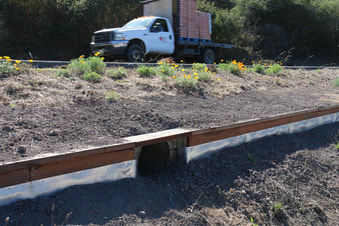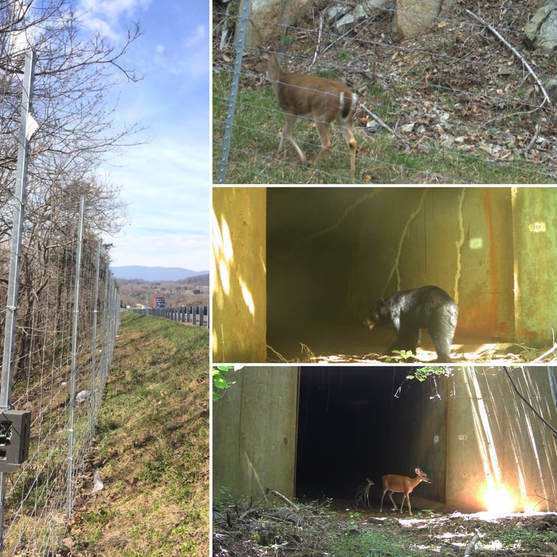 A salamander crossing to allow safe passage under a road. Photo by Ashley Spratt/USFWS, Creative Commons 2.0. A salamander crossing to allow safe passage under a road. Photo by Ashley Spratt/USFWS, Creative Commons 2.0.
Wildlife crossings are underpasses or overpasses that allow wildlife to pass unharmed beneath or above a road to access important habitat. This connection also helps prevent the isolation of wildlife populations, which can increase the risk of eventual extirpation or local extinction. Wildlife crossings can vary in size depending on the target species, and many underpasses function as wildlife crossings even if they weren't designed for that purpose.
One of the objectives of VSWCC is to identify existing underpasses that are or could be used by wildlife and work towards implementing measures to increase their use. Adding wildlife fencing along the roadside and connecting it to an underpass can help guide wildlife to the structure and keep them off the road. Similarly, VSWCC is conducting site visits to known amphibian and reptile mortality hot spots throughout Virginia. The goal is to determine if we can reduce wildlife mortality at these sites through the use of simple and inexpensive interventions like drift fencing. Fencing mechanisms could serve to funnel small wildlife, like salamanders and turtles, into existing culverts on the sites. This would encourage them to pass safely under roads where they are often struck by cars. Special emphasis is being placed on species of greatest conservation need and their habitats listed in the Virginia Wildlife Action Plan. Learn more about other salamander crossing projects in Virginia here. |

